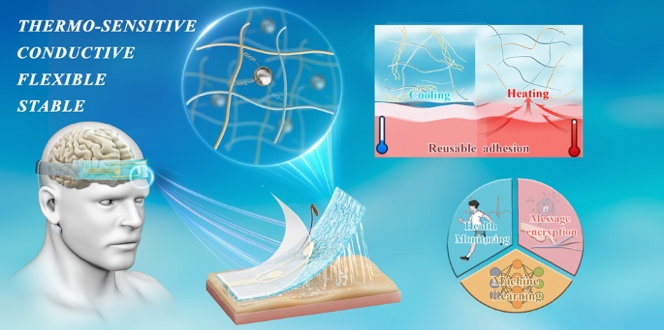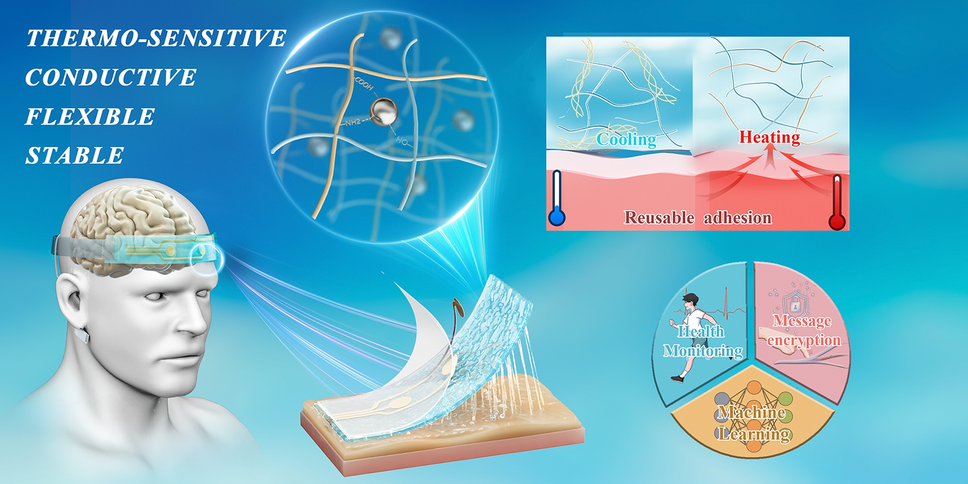Machine Learning Enabled Reusable Adhesion, Entangled Network-Based Hydrogel for Long-Term, High-Fidelity EEG Recording and Attention Assessment
Published in Materials, Neuroscience, and Computational Sciences

Flexible electronics just took a quantum leap forward. A joint team from Beijing Institute of Technology and Lanzhou University, led by Prof. Bin Hu and Prof. Ran Cai, published in Nano-Micro Letters, has unveiled a next-generation hydrogel sensor that combines liquid-metal conductivity, reusable skin adhesion, and machine-learning-powered attention decoding—all in one ultrathin patch.
Why the PGEH Patch Is a Breakthrough
-
Skin-Like Stretch & Strength
The polyacrylamide/gelatin/EGaIn hydrogel (PGEH) stretches to 1643 % strain, withstands 366 kPa tensile stress, and survives 20000 compression cycles—matching natural skin mechanics while preserving sensor integrity. -
Temperature-Smart Adhesion
Body-heat activation (30–40 °C) triggers reversible bonding with skin at 104 kPa. A 10 °C cold-water rinse releases the patch painlessly—no irritation, no residue, and reusable for >30 cycles.-
Microvolt-Scale EEG Precision
Ultra-low impedance (310 Ω at 100 Hz) and a 25.2 dB signal-to-noise ratio allow PGEH to capture microvolt-level EEG signals for 48 h—far surpassing Ag/AgCl electrodes that degrade after 6 h.
-
Microvolt-Scale EEG Precision
-
AI-Driven Attention Assessment
Coupled with the lightweight EEGNet model, the three-channel headband achieves 91.38 % accuracy in classifying focused, distracted, and fatigued states—opening doors to real-time cognitive feedback in education, healthcare, and high-risk occupations.
From Lab to Life
- Encrypted Communication: Finger-tap Morse or binary code via capacitance changes—secure, hands-free messaging.
- Rehabilitation & Diagnostics: Continuous ECG/EMG monitoring for cardiac or muscular disorders with clinical-grade fidelity.
- Personalized Neurofeedback: Track attention cycles, optimize work-rest schedules, and issue fatigue alerts—all in a soft, comfortable headband.
With its rare blend of mechanical resilience, biocompatibility, and AI integration, the PGEH platform is poised to redefine wearable neuromonitoring—turning everyday accessories into intelligent health guardians.
Follow the Topic
-
Nano-Micro Letters

Nano-Micro Letters is a peer-reviewed, international, interdisciplinary and open-access journal that focus on science, experiments, engineering, technologies and applications of nano- or microscale structure and system in physics, chemistry, biology, material science, and pharmacy.






Please sign in or register for FREE
If you are a registered user on Research Communities by Springer Nature, please sign in